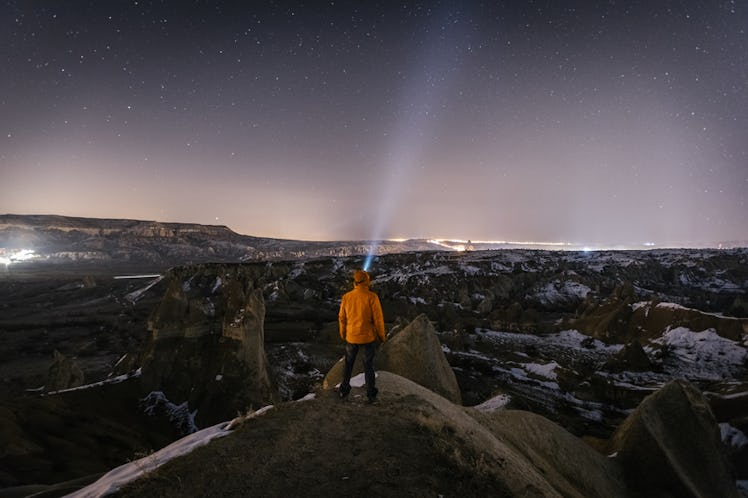
This Is When The Winter Solstice Officially Begins, So Bundle Up & Get Cozy
The winter solstice happens on Dec. 21, and with it comes extended darkness, the onset of winter, and several Pagan traditions and myths. We all tend to focus on the winter solstice's role as the shortest day of the year (usually with a groan or a sigh) without thinking about when, where, how, and why it's happening in the first place. So before we all start to freak out about how to cram a normal day into a tiny one, it might be helpful to ask a few questions: For instance, what time does the winter solstice begin?
This year, the winter solstice will take place on Thursday, Dec. 21 in the Northern hemisphere (for those in the Southern hemisphere, this will mark the summer solstice). Dec. 21 will mark the onset of the winter season (by astronomical considerations, anyway) and the shortest day of the year for one main reason: The winter solstice has nothing to do with how close to the sun the Earth is, but rather, it has to do with how far the Earth is tilted away from the sun.
The Earth is always tilted at 23.5 degrees to the sun, but the winter solstice marks when the earth is tilted farthest away from the sun.
More specifically, the actual winter solstice is set to occur at approximately 11:28 a.m. EST (if you're not on EST, this is when the solstice will happen in your location). This basically explains why we get so little light on that day, as well as most days during the winter season.
How little light, do you ask? Of course, that depends on where you live exactly. For example, if you're in Washington D.C., you'll get around nine and a half hours of sunlight on Dec. 21. But if, for whatever reason, you were to find yourself near the Arctic Circle that day, you'd experience as little as three hours and 40 minutes of daylight. Did anyone else just get chills?
Keep in mind, this doesn't necessarily mean that you're going to see anything at 11:28 a.m. EST. In fact, you most likely won't see anything throughout the day, beyond a standard sunset. The timing of the winter solstice simply refers to the most precise measurement of when the Earth is tilted farthest from the sun.
If you're interested in making some sort of visual party about it, you should plan for the sunset, which will at least serve as a symbolic moment of the solstice.
Despite popular belief, the winter solstice will not be the coldest day of the year, even if it's technically going to be the darkest.
In most parts of the country, the coldest time of the year will likely occur later on in the depths of winter — aka sometime during January or February.
In truth, the winter solstice is going to look like any other normal day. But plenty of people choose to celebrate the day, and in fact, many consider it an annual tradition to travel to Stonehenge in Scotland, a popular winter solstice location because it's directly aligned toward the sunset during the solstice.
If you go to Stonehenge for winter solstice (which would be a pretty expensive, last-minute decision, but hey, you do you), you can definitely expect a good time. Since Stonehenge and the winter solstice are both founded in Pagan traditions and mythology, the Stonehenge winter solstice party is, for lack of a better way to phrase it, a real banger of an occasion.
Wherever you are and whatever you're doing on the winter solstice, it's an excellent day right before the end of our calendar year to take a minute to reflect on the previous year.
You don't have to do anything fancy. In fact, the longest night of the year is the best possible opportunity to go home a little early, light a candle or two, say as many (or as few) prayers and incantations as you want, and throw on a holiday movie with someone you love.